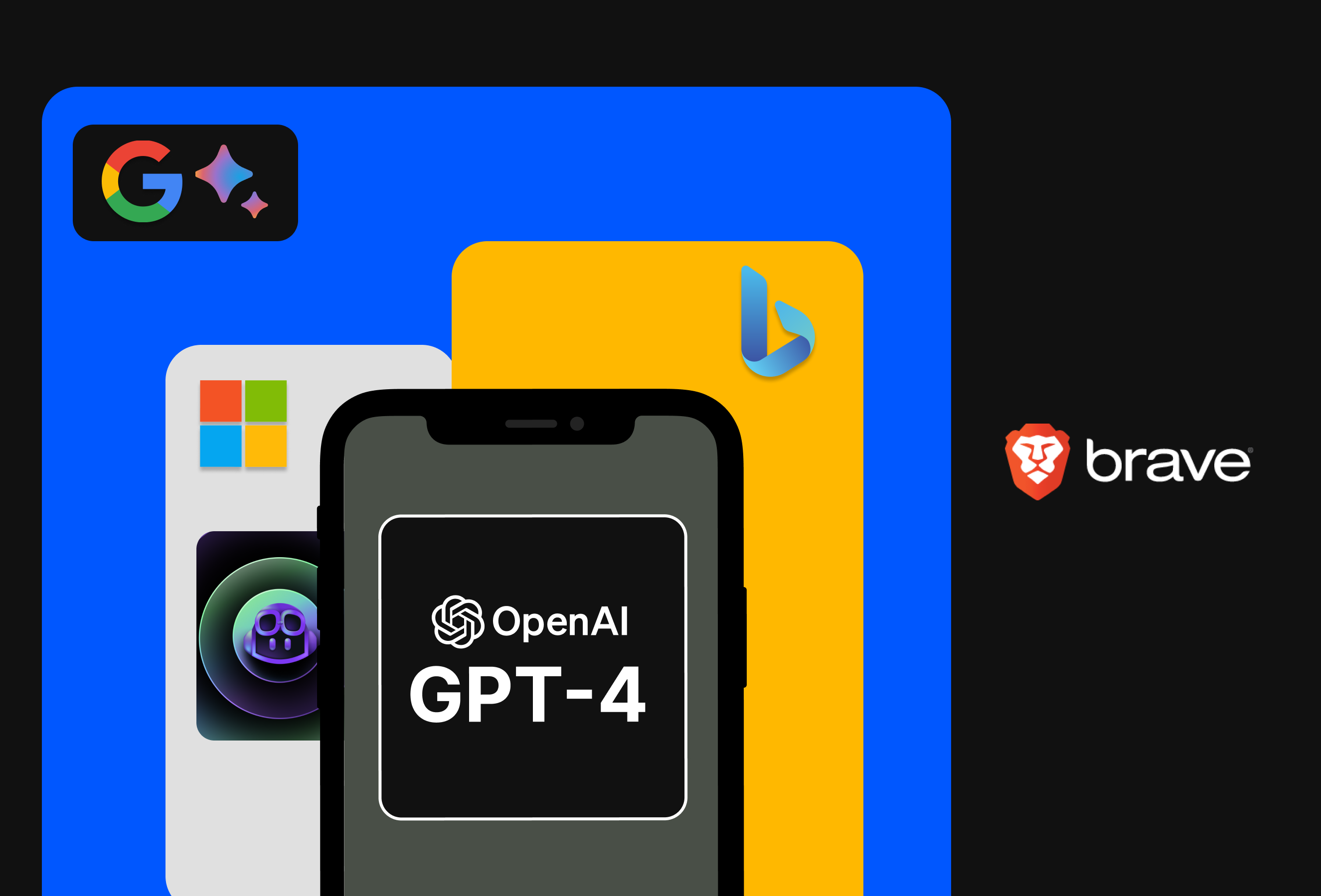ChatGPT
Released in February of this year, OpenAI's ChatGPT has been a hot topic for anyone in the technology world. It is widely used thanks to its attractive and somewhat accurate response to any question or query you might have, providing a lifeline for finding quick answers without the need to search and scroll through the many links a Google search would provide.
ChatGPT solves a new problem, which is why it's gaining a lot of traction. As I mentioned in my previous article, language models such as ChatGPT offer a glimpse into what our future will look like. Since posting that initial article, a few things have changed, from more companies offering similar services or simply utilizing ChatGPT's API, to the model itself being updated to version 4, offering more complex results and capabilities.
Checkout the latest from: OpenAI
Try ChatGPT for yourself: ChatGPT
Microsoft
Microsoft released Bing search with ChatGPT. It's currently running version 4 and is considerably more limited and restrictive when it comes to getting a response back. Released on a public model to all users of Bing gives it an edge over Chrome. However, the experience isn't the same interactive experience as having a conversation on OpenAI's website.
"Technology is just a tool. In terms of getting the kids working together and motivating them, the teacher is the most important."- Bill Gates
Given that Bing's new chat feature is restrictive to the Edge browser, it ensures that there's enough of an advantage to compete with Google Chrome. The chat service offers three modes through a conversation selection method: Creative, Balanced, or Precise. Conversations are not saved and are restricted to a few responses before having to start over.
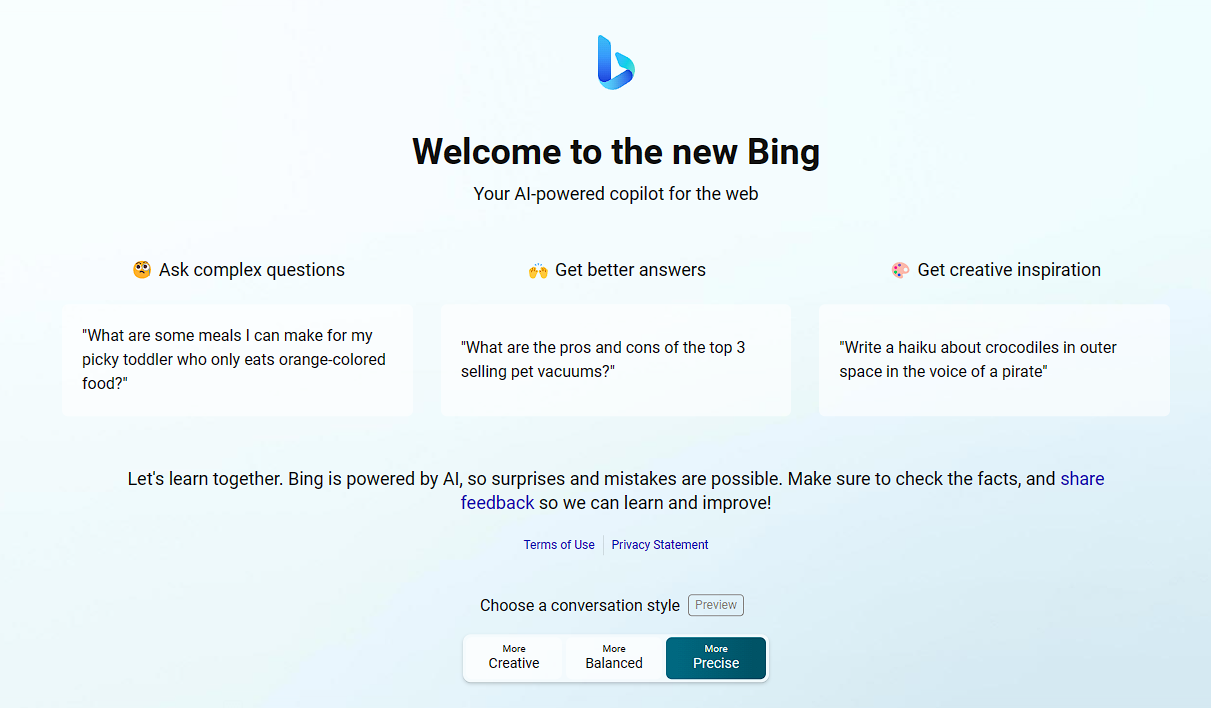
After the initial use, it's quite helpful at returning answers in both a relevant context and general knowledge. Being able to integrate with Bing search, it essentially scans websites and then gives a summary with options to clarify or learn more through the provided links. It does a mixture of searching through its knowledge and just searching the web.
The main difference is just a personality factor. It feels like searching the web, given exactly what you search, and then gives clarity from where the information originated by listing sources to those websites. To clarify information further, it can suggest options for you based on similar responses, acting as a follow-up to the initial request or simply allowing you to type in your answer.
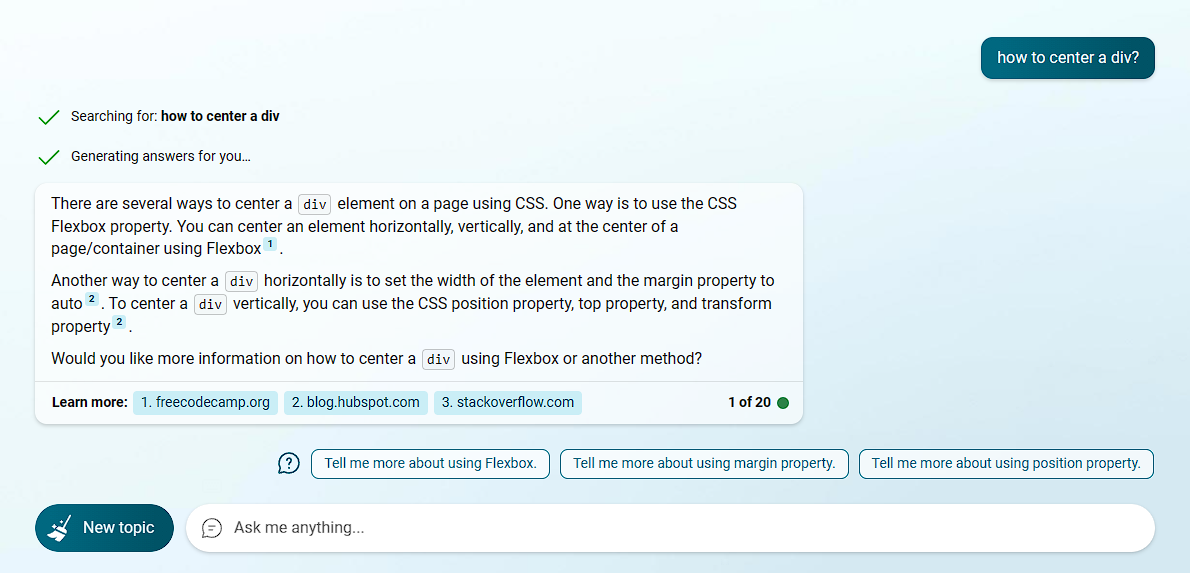
Bing provides the user with limited options and often cuts off the request. They've introduced a limit for responses before a new topic must be established, which blocks the existing conversation and encourages the user to select the broom button to sweep the chat away. This restriction is likely to prevent the model from going out of scope and ensures everyone can use it. Something interesting to consider is how history works with these models. At this stage, it isn't saved anywhere accessible and resets back to a default splash screen.
Try Bing's ChatBot Feature for yourself (Requires Edge Browser): Bing
Google recently opened up Bard for early access, and it's fast at responding, but it isn't entirely accurate yet. Offering streamlined performance is one thing, but being able to correctly return information is critical. Considering this is Google's in-house Language Model, there is a high expectation to ensure it works and aligns with the company's ethos. The current state of Bard is behind ChatGPT, extremely restrictive but much more responsive.
Currently available in the United States and the United Kingdom through early access, no date for a public release has been announced. Google's concept for Bard is to provide a complement to searching the web. The model is likely to be similar to Bing, searching and responding with exact results. Bard in other software mentioned below will be slightly more advanced and specific to the software.
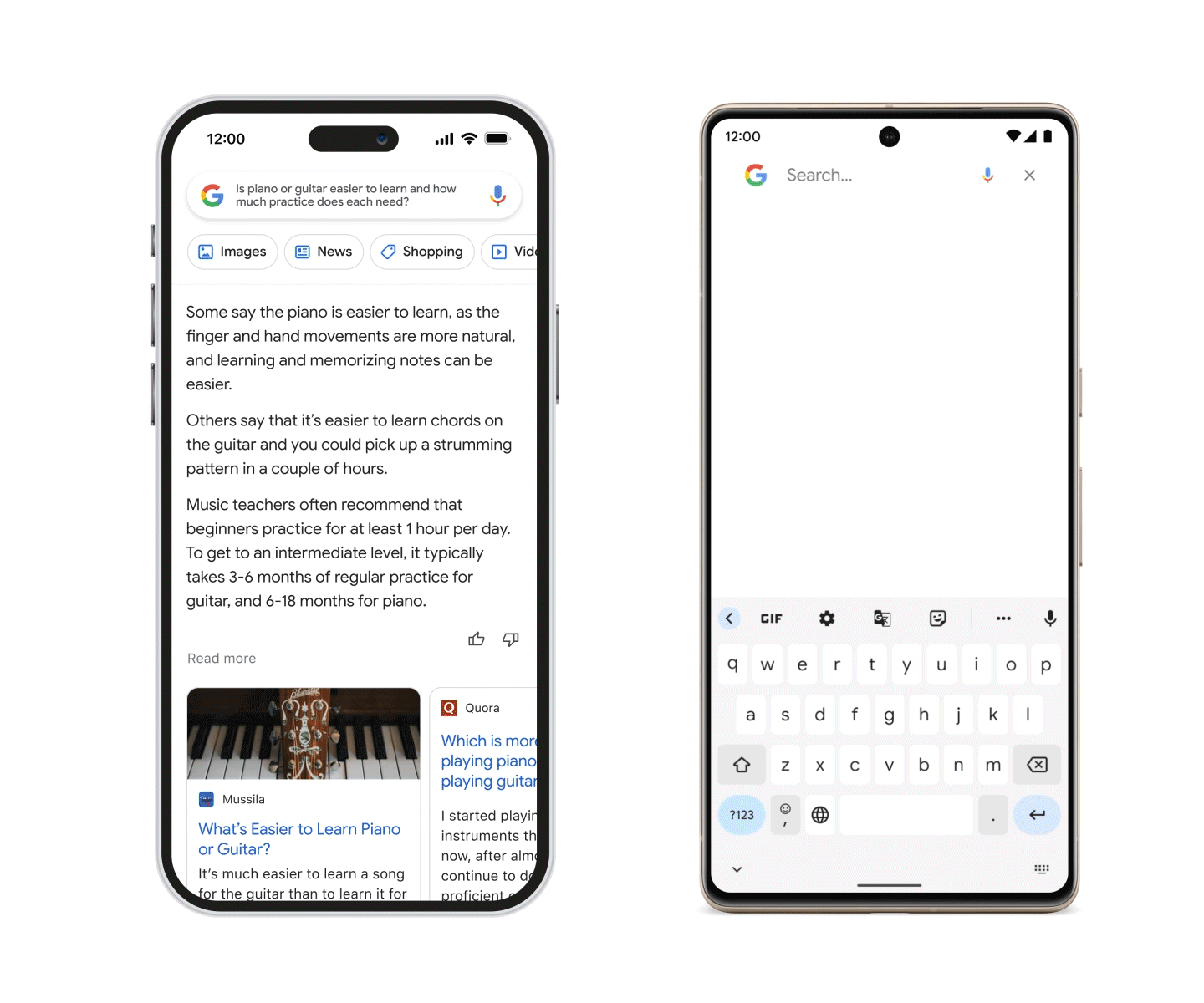
Expect more changes and improvements over the coming months for Google, improving accuracy and features in their software. Once their Language Model (LaMDA) is tested and perfected for use in Bard, fewer restrictions will be applied, allowing users to search and get results across Google's massive archive of data. For the time being, this is a slow release and will unlikely be the final product for Bard.
Learn more about Bard and join the waitlist: Google
Software adapting
Both Google and Microsoft are beginning to ship software with their AI solutions to help speed up mundane tasks across their software line up. Google first announced that they're working on introducing Generative AI tools in their software, such as Docs, Gmail, and more. These new AI features will enhance the way we work, reducing the amount of time spent planning. The following example shows a Google Doc with a ChatGPT-like box asking the user to input the information they want, and it generates an entire document!
Read the announcement from Google
Two days after this announcement, Microsoft also announced that they're working on shipping a new AI-powered line-up called Copilot that will be introduced across the 365 line-ups, including some of the following: Word, Excel, and Outlook. Their vision is to boost the level of creativity using the power of your own words. Much like Google's Doc approach, Microsoft follows a similar concept of simply inputting your request and watching the magic happen. Something a bit different is Copilot also adds a feature to generate content based on files.
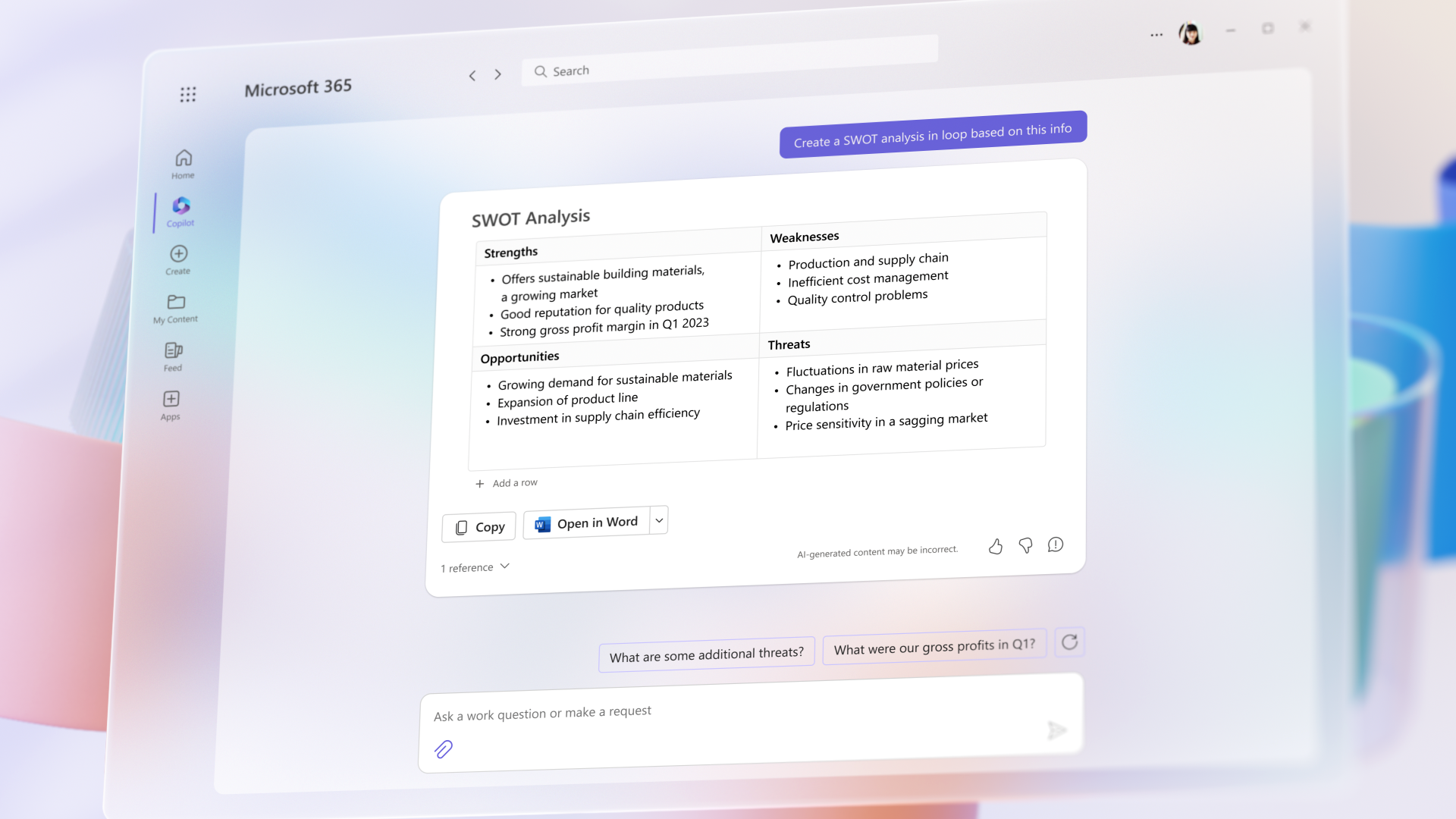
Read the announcement from Microsoft.
Both announcements mean that it's about to get a lot easier to create and draft documents exactly the way you want. A possible concern with this is the usage of generating specific documents that may make it easier for bad actors to automate and perfect their attacks.
Also factoring in that academically, this will be a helpful tool in acting as a starting point or a prompt in many situations. It could also help users understand more about what they write and identify issues or suggest better ways to achieve them. Schools and universities will likely see a drastic increase in the quality of work, as each student can convey their ideas exactly how they envisioned.
Something to point out is that academically, having an AI write an entire essay for you should not count towards plagiarism, in the given context that parts may be generated by an AI. It's the initial prompt and the student's input that leads to the result. If the student generates an essay using AI entirely and is marked as a C, then that is based on the student's effort to incorporate and utilize the tools at hand, much like researching or just searching the web. Considering higher grades like A, A+ should also be factored in. If the generated content is sitting at an A level when marked, then that is the grade received based on the effort put in by the said student.
We cannot rely on the usage of plagiarism detection software to prevent AI-generated content from receiving a passable grade. A student must put in the effort to reach a passable grade, and universities must adapt their marking criteria to factor in things an AI cannot do, and that is a level of personality and creativity.
Businesses will likely utilize this tool for a lot of mundane tasks such as shown above creating job postings, ads, or content on their website. These tools shouldn't be an end solution but rather a way to create quick solutions and build your own ideas using them.
Copilot
A new addition to Github's existing Copilot software introduces a more complex solution, incorporating a new language model that will be a true partner when it comes to coding. Being a part of the Microsoft ecosystem, Copilot will be running the latest ChatGPT version 4 and Github's own model in code auto-completion.

A new companion for coding, Copilot solves the problem of having to search Stack Overflow or other countless forums to solve a simple problem. Many designers and web developers search "How to center a Div." but directly within Visual Studio Code, Copilot will feature next to code, following suit like ChatGPT, being able to converse and read in code as it's being written.
Directly pointing out issues and providing solutions with understanding is going to change how future developers learn code languages. While grasping the fundamentals is the easy part, often developers are eager to build projects and end up in what's known as tutorial hell, simply watching someone else code and replicating it. Copilot, in this context, would act like a mentor. If there's something that needs clarification or a better explanation, then you'll get it directly with an accurate response.
Copilot will be a helpful tool for all developers, improving workflows for production-ready code, to beginners trying to grasp concepts. This adds a level of understanding and guidance that will reduce the time spent trying to solve bugs or implement ideas within projects.
Currently, in a technical preview stage, Copilot is available on the Microsoft ecosystem: Visual Studio, and Visual Studio Code, with plans to expand into other Integrated Development Environments or IDEs such as Neovim, Jetbrains and more as the extension is developed.
Learn more about Copilot X: Github
Summarizer
The privacy-focused browser has released a new AI summary tool to their native search engine called Summarizer, providing a concise-to-the-point answer at the top of search results based entirely on web search results. They’ve trained their Large Language Model to process multiple sources across the web, resulting in a more accurate answer.
A step in the right direction is maintaining attribution of information, where the information is sourced and how to access them. Brave does this by listing source links under each response. Similar to Bing’s approach, this ensures that the content generated can be reviewed and assessed by the user to determine the trustworthiness of the sources.
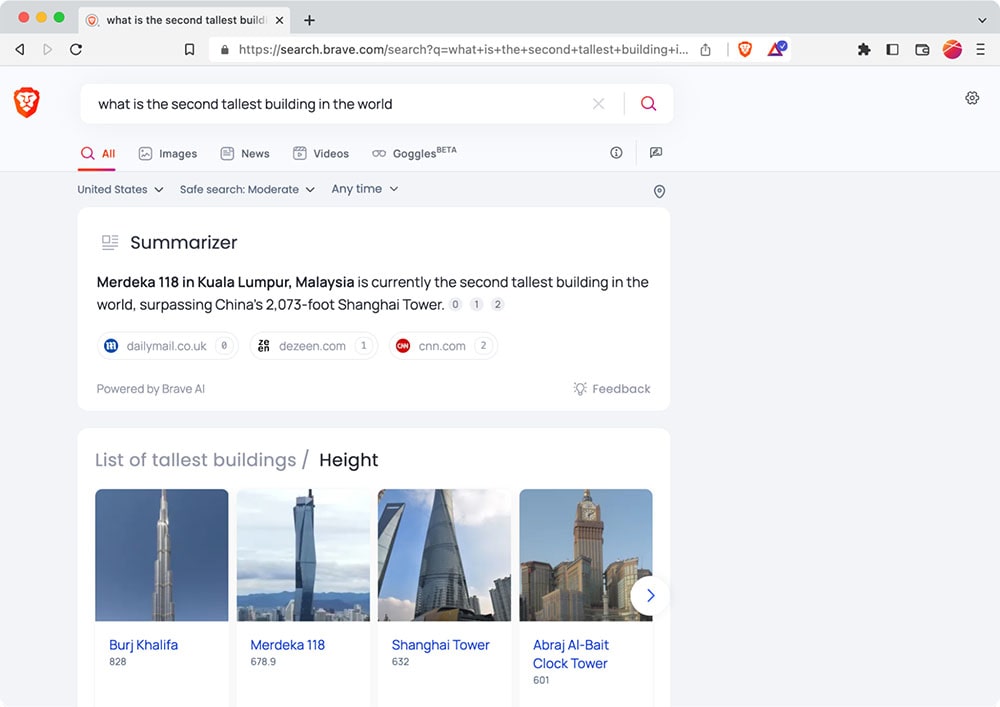
A lot of language models do not identify where information is sourced from, specifically speaking, ChatGPT displays information but doesn’t source where it’s from. Providing results without attribution, the level of bias can be set on what the language model has been trained on. It’s critical to ensure Language Models are trained to respect sources and mitigate bias in results.
In addition to providing a specified section labelled Summarizer, Brave’s AI model is also capable of altering result snippets in search results with a more refined summary highlighting the specific answer, helping users better understand the content.
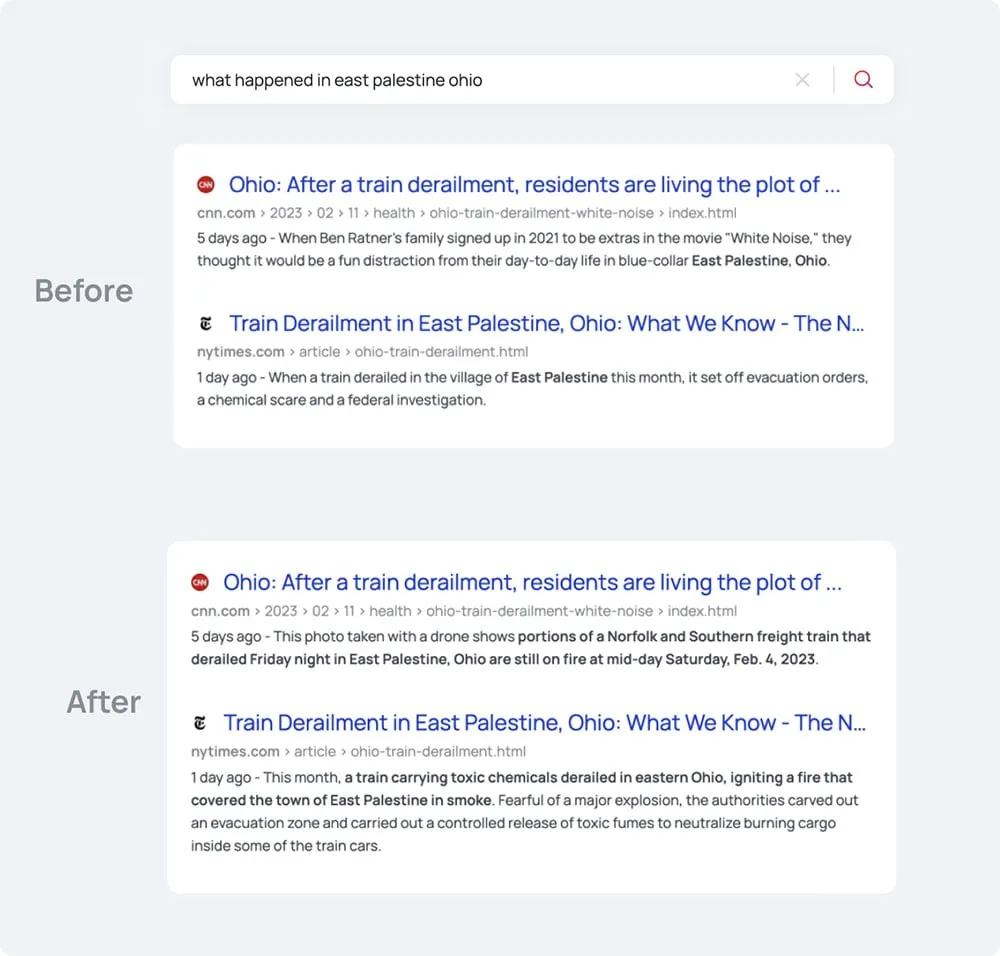
What makes this stand out from using Bing or Google is Brave’s AI model is entirely run by Brave and does not rely on third parties for their Language Model Solutions such as ChatGPT. Developed in-house, their language model is trained on three different Large Language Models or LLMs following the same ethos across their software line-up of being independent and private. These Models are based on BART, DeBerta, and their own data from search results, all trained on completing different tasks such as Question Answering, Classification, and then Summarizing.
Brave continues to challenge and innovate alternatives to the industry giants. Being relatively new, it’s not perfect and will continue to adapt as AI develops and their search engine advances.
Read more about Brave's new feature
Try their search engine - It's private! Brave Search
Spotify
Spotify is working on something a bit different, giving premium users their own personal DJ based on their listening habits using historical data from the user. Much like the end-of-year analytics of the most played or top artists, this new feature being introduced will take all that information and create your own DJ personalized to you, removing the need to search for songs, find songs, or listen to playlists.
Powered by OpenAI and a voice model from Sonantic used for the DJ’s voice, trained to act and respond as a typical DJ would, their AI model has different categories such as genre, artist, or mood, being much like a personalized DJ set based on all the music you like.
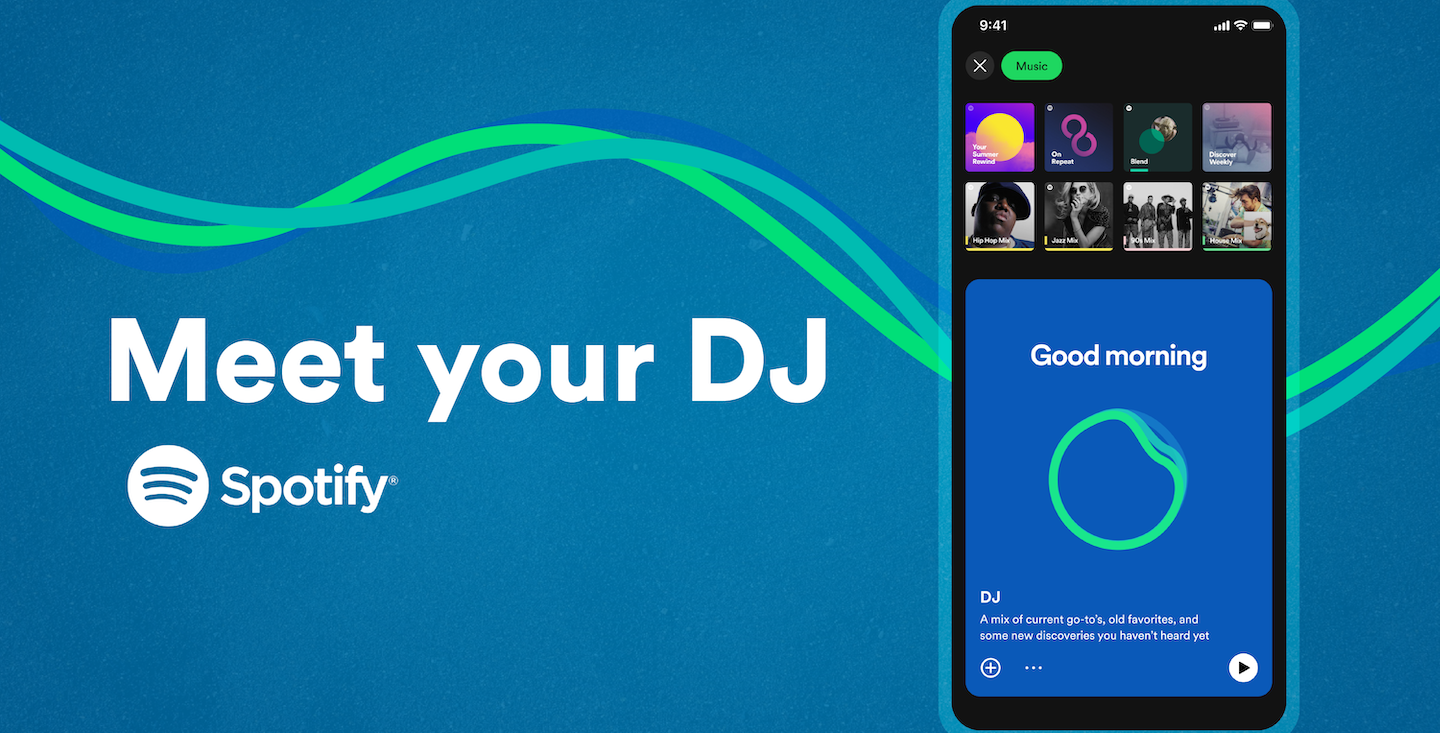
Spotify’s algorithm for personalizing and finding exactly the user's music taste has been incredible. It can match music exactly to you without any major language model. The problem with Spotify currently is giving the user an experience that isn’t the same. A common problem is for playlists or song radios the content is repeated, often in the same order.
Adding in this new feature builds on the shuffle button, playlists, and radio features previously used. Open to only the United States and Canada at the moment, the DJ speaks in English and will say artists' names and song titles in between tracks and transition each song, accordingly, incorporating new and old songs, much like their Daily Mix playlists or Discover Weekly.
A few concerns with this are the model being trained on specific genres of music. There are many sub-genres of music that could be classified as something entirely different and this is a concern when recommending songs from a genre entirely unrelated. Given that it’s a mixture of either entirely new songs or old ones, the AI model could present potential risks in delivering undesirable titles or artists to the user. More to come on this.
Learn More: Spotify
Next
From what’s happening across the various industries, it’s clear that artificial intelligence will continue to be incorporated into almost everything used in our daily lives. How we interact with websites through live chats, in the future, will be entirely run by models like ChatGPT, with less of a need for human interaction to answer simple queries.
A popular area where I personally think ChatGPT and other large language models would work well is virtual assistants. Apple’s Siri has been around for years and is behind a lot of its competitors. Apple will plan on either developing its own solution or something influenced by ChatGPT and vastly improving Siri beyond the point of Google, Amazon, and Samsung combined. Apple is known to be a slow adapter when it comes to new technology or features until it’s refined and perfected. If their model were to outperform ChatGPT, then they’ll likely take the lead in OpenAI’s direction and the future of artificial intelligence.
